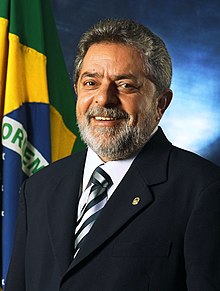I have always had a passion for cities and urbanism, and I find the urban environment in Brazil to be fascinating. Therefore, I wish to examine the historical development of Brazilian cities in some capacity to see what the development of Brazilian cities tells us about the culture and way of life. More specifically, I’m looking at two different Brazilian cities: Belo Horizonte and Salvador as they exemplify two distinct development patterns and urban layouts. For Belo Horizonte, I would look at the logic behind the planning of the city with an eye towards the specific purpose behind the planning of the city and how that planning affected the future development of the city. Alternatively, I would like to look at Salvador, which follows a very different model of development given its historic purpose. I would look at the creation and maintenance of the historic Portuguese old town and the more organic development plan of the rest of the city. Looking at a city’s development as a way for understanding more about Brazil would be a unique way to deepen our understanding of the country and involves some unique primary sources.
If looking at Belo Horizonte, I would hope to discover more about the effect that the more industrial and resource extraction foundational purpose had on the development of the city. This would be analyzed through a look at the original plan for the city and the relation of the future developments to the initial plan for the city. Inherently I think this research would have to involve a look at class or racial distribution throughout the city in light of the initial plan of the city, and thus the city plan itself and the history of development could be a way for understanding the patterns of settlement and stratification in the modern city. An urban-based analysis could also reveal additional elements of race relations and attitudes in Brazil
I believe my aims would be fairly similar if looking at Salvador, but the method of inquiry would be different by nature of the city. As one of the oldest cities in the Americas, Salvador has a longer and more organic history than Belo Horizonte. Furthermore, it has a distinct and unique old town in the Pelourinho that contrasts with the more organic growth of the rest of the modern city. Furthermore, the city’s historic division into the high and low town also allow for an analysis of class relations, and its site as a major city of the Transatlantic slave trade makes it very diverse today and thus an interesting place to look at transculturation in city layout and design as a way of understanding how cultures interact to produce new culture. Again, I would have to look at race and class distribution as part of this analysis too as part of the look at the built environment, and I think Salvador would be an excellent place to look for this analysis.
As we have learned in class so far, Brazil is a remarkably diverse country that is the result of a variety of factors throughout its history. This history has led to the unique country we see today, and one way of understanding how this country came to be and some of the results of this historic diversity is by looking at the cities and tracing their unique development patterns. Despite their incredible importance to the history and economy of Brazil, my limited research into the subject has not revealed much research on cities in relation to the unique country that Brazil is today. Therefore, analyzing the development of one of Brazil’s cities could reveal new information about how and why Brazil is the way it is.
Secondary Sources
BARBIER, M. B., and Michel ANTONELLI. “Salvador de Bahia. Evolution Du Centre Ville.” Cahiers Du Monde Hispanique et Luso-Brésilien, no. 37 (1981): 269–71.
Cintra, Antônio Octávio. “Urban Development in Brazil: A Study of Policies and Unpolicies.” Luso-Brazilian Review 17, no. 2 (1980): 213–32.
Friendly, Abigail. “Urban Policy, Social Movements, and the Right to the City in Brazil.” Latin American Perspectives 44, no. 2 (March 2017): 132–48. https://doi.org/10.1177/0094582X16675572.
“Historic Centre of Salvador de Bahia – UNESCO World Heritage Centre.” Accessed February 10, 2018. http://whc.unesco.org/en/list/309.
Levine, Robert M. “The Singular Brazilian City of Salvador.” Luso-Brazilian Review 30, no. 2 (1993): 59–69.
Lima, Zeuler. “Preservation as Confrontation: The Work of Lina Bo Bardi.” Future Anterior: Journal of Historic Preservation, History, Theory, and Criticism 2, no. 2 (2005): 24–33.
Rezende, Vera F. “Brazilian City Planners, American City Planning? New Perspectives on Urban Planning in Rio de Janeiro, 1930–1945: Research from the Field.” Planning Perspectives 25, no. 4 (October 2010): 505–13. https://doi.org/10.1080/02665433.2010.505071.
Rio, Vicente del, and William Siembieda. Contemporary Urbanism Brazil: Beyond Brasília. University Press of Florida, 2009. http://0-muse.jhu.edu.dewey2.library.denison.edu/book/17466/.
Smith, Harry, and Emilio José Luque-Azcona. “The Historical Development of Built Heritage Awareness and Conservation Policies: A Comparison of Two World Heritage Sites: Edinburgh and Salvador Do Bahia.” GeoJournal 77, no. 3 (2012): 399–415.
Violich, Francis. “URBAN GROWTH AND PLANNING IN BRAZIL.” Ekistics 7, no. 42 (1959): 320–24.
Primary Sources
Grant (M.D.), Andrew. History of Brazil: Comprising a Geographical Account of That Country, Together with a Narrative of the Most Remarkable Events Which Have Occurred There Since Its Discovery … H. Colburn, 1809.
“Salvador (Salvador, Bahia, Brazil) – Population Statistics, Charts, Map, Location, Weather and Web Information.” Accessed February 12, 2018. https://www.citypopulation.de/php/brazil-bahia.php%3Fcityid%3D292740805.
“The City of Salvador – World Digital Library.” Accessed February 12, 2018. https://www.wdl.org/en/item/219/#q=salvador%2C+bahia&qla=en.
“Ville de Saint Salvador, Capitale Du Bresil. – David Rumsey Historical Map Collection.” Accessed February 12, 2018. https://www.davidrumsey.com/luna/servlet/detail/RUMSEY~8~1~232921~5509492:Ville-de-Saint-Salvador,-capitale-d?sort=Pub_List_No_InitialSort%2CPub_Date%2CPub_List_No%2CSeries_No&qvq=w4s:/where%2FSalvador%2B%252528Brazil%252529;q:salvador;sort:Pub_List_No_InitialSort%2CPub_Date%2CPub_List_No%2CSeries_No;lc:RUMSEY~8~1&mi=4&trs=5.
Wells, James William. Exploring and Travelling Three Thousand Miles Through Brazil from Rio de Janeiro to Maranhão: With an Appendix Containing Statistics and Observations on Climate, Railways Central Sugar Factories, Mining, Commerce, and Finance … S. Low, Marston, Searle, & Rivington, 1887
Google-Books-ID: Kuq_AAAAIAAJ




